In today’s digital landscape, content marketing has become an essential tool for B2B marketers looking to establish thought leadership and nurture long-term relationships with their clients.
However, crafting a content strategy that resonates with business clients and yields measurable results can be a daunting task. Digital marketing agency, Fox & Bear, has compiled a step-by-step framework to develop an effective B2B content marketing strategy, to not only engage your audience but also to help drive conversions.
Step 1: Define your objectives
Identifying your primary goals for your content marketing efforts is crucial. This means establishing specific, measurable, achievable, relevant, and time-bound (SMART) objectives. Whether your aim is to enhance brand visibility, generate high-quality leads, or position your company as an industry leader, each piece of content should contribute directly to these objectives. Examples of specific goals could be increasing website traffic by 20% within six months or generating 100 new leads per quarter. Clear objectives will guide your content strategy and help you measure its success.
Step 2: Understand your audience
The foundation of effective content marketing is a deep understanding of your target audience. This involves more than just knowing their industry—it’s about understanding their daily challenges, the solutions they seek, and the factors influencing their decision-making processes. Conducting interviews, surveys, and analysing industry reports can provide valuable insights. The development of detailed buyer personas will help tailor your content more precisely, ensuring it resonates and engages the intended audience at a deeper level.
Step 3: Content audit and planning
A thorough content audit helps you assess the effectiveness of existing content and identify opportunities for improvement or repurposing. Evaluate each piece’s current relevance, performance metrics, and alignment with your strategic goals. Following the audit, organise a content calendar that strategically schedules publications to maintain a consistent and relevant presence in your audience’s lives. This calendar should balance various types of content to address different stages of the buyer’s journey, ensuring a mix that educates, engages, and converts.
Step 4: Create compelling content
Creating content that captivates and adds value is paramount. Each piece should clearly address the identified needs or pain points of your personas and offer actionable insights or solutions. Employ storytelling to make complex topics accessible and engaging. Also, maintaining a consistent tone and style that reflects your brand’s identity helps in strengthening your brand’s voice and can enhance audience recall and loyalty.
Step 5: Leverage the right distribution channels
Choosing the right channels is essential for putting your content in front of the right eyes. While LinkedIn is a staple in B2B marketing for its professional network, other platforms like X, industry blogs, or even B2B-focused community forums can be part of your distribution strategy. The choice of platform should be driven by where your target audience is most active and where they are most likely to consume and engage with your content.
Step 6: Engage and interact
Active engagement is critical in building lasting relationships with your audience. This could mean moderating comments on blog posts, responding to queries on social media, or facilitating discussions on relevant topics. Such interactions not only foster community but also provide insights into your audience’s evolving interests and needs, which can inform future content.
Step 7: Measure and optimise
Continuous improvement in content marketing comes from diligently measuring the impact of your efforts and optimising based on the data. Utilise tools like Google Analytics 4, social media insights, and email marketing software to track how your content performs across different metrics. Analyse these findings to understand what types of content drive traffic, engage readers, and convert prospects. This ongoing process helps refine your strategies, making them more effective over time.
Crafting an effective B2B content marketing strategy requires a thoughtful and systematic approach that aligns closely with your business objectives and the specific needs of your target audience. By setting clear goals, deeply understanding your audience, performing thorough content audits, and strategically planning your content delivery, you lay the groundwork for a successful content marketing framework.
Creating compelling content is at the heart of this strategy. It must not only capture the attention of your audience but also provide them with valuable insights that address their challenges and encourage them to engage with your brand. Choosing the right distribution channels ensures that your content reaches your audience through the most effective mediums, enhancing visibility and engagement.
Conclusion
Actively engaging with your audience fosters a sense of community and loyalty, providing your brand with invaluable feedback that can be used to refine future strategies. The importance of measuring and optimising your content cannot be overstated. This iterative process ensures that your content marketing efforts are not static but evolve based on actual performance data and changing market conditions.
By following these steps, B2B marketers can develop a robust content marketing strategy that not only reaches but resonates with their target audience, ultimately driving engagement, generating leads, and contributing significantly to the overall success of their business. This dynamic approach ensures that your content marketing strategy remains effective, relevant, and continuously aligned with your evolving business goals.


 Whether you want to learn how to use LinkedIn, X or Facebook for marketing, or need to brush up on business skills like leadership, presentation skills or managing meetings, you will find something to enhance your professional skills with these on-demand courses.
Whether you want to learn how to use LinkedIn, X or Facebook for marketing, or need to brush up on business skills like leadership, presentation skills or managing meetings, you will find something to enhance your professional skills with these on-demand courses.